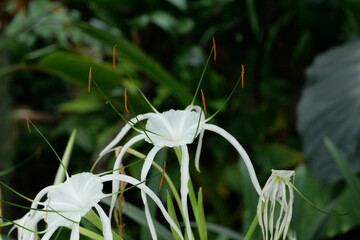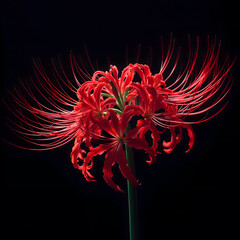



"Explore Trees, Discover Nature. " -Fr.Principal




Crinum asiaticum is a perennial herb that typically grows up to 1.2 m (3.9 ft) tall. Its pseudobulb is spherical. The upper part of the bulb is cylindrical. The base is laterally branched, with a diameter of about 6–15 cm.The corolla is spider-like shaped, white, linear, revolute, attenuate, 4.5–9 cm long, and 6–9 mm wide. The corolla is 6-lobed. The fruit is an oblate capsule, green, and 3–5 cm in diameter. The seeds are large, and the exotesta is spongy.The entire plant is toxic, especially the bulb.It contains a variety of alkaloids such as lycorine and tazettine. When eaten, it can cause vomiting, abdominal pain, severe diarrhea, constipation, irregular breathing, rapid pulse, fever, etc.; sufficient misuse can cause nervous system paralysis and death.
1. It is used in traditional medicine to treat various ailments such as gastric ulcers, wounds, and respiratory problems.
2. It is rich in antioxidants, which can help protect the body from free radical damage and reduce inflammation.
3. It is also known to help boost the immune system, improve digestion, and reduce the risk of certain diseases.
4. A preparation of the root is given to aid childbirth and for postpartum haemorrhage.
5. The juice from the squeezed leaves is applied to cuts and wounds.